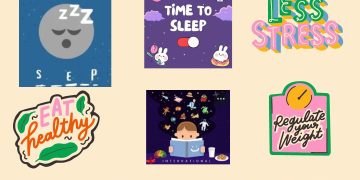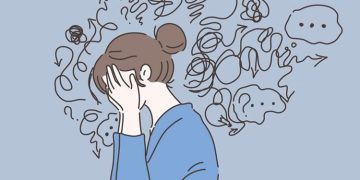
LGBTQ+ Adolescents Issues

L stands for the acronym LGBTQ for #BlogchatterA2Z–LGBTQ+ Adolescents Issues. It stands for Lesbian, Gay, Bisexual, Transgender, and Queer individuals. It relates to our attractions and self-perceptions. This varies among individuals, and that’s acceptable. Some people are LGBTQ because they’re different from what we consider normal.
Facing Adversity with Courage
Being different takes courage. Even in ancient Indian stories, there are mentions of people who aren’t just male or female. But during the British rule, LGBTQ people faced violence and unfair treatment.
Legal Changes Over Time
In the past, same-sex relationships were against the law in India. But in 2018, the Supreme Court changed that. Still, LGBTQ people face problems; getting proper healthcare or jobs and being treated with disrespect?
History of LGBTQIA+ Recognition
- In 1861, the British made laws against same-sex activities.
- In 1977, the publication of a book called “The World of Homosexuals” took place.
- In 1994, transgender people got voting rights.
- The Supreme Court, in 2014, ruled that transgender people are a third gender.
- In 2017, the Supreme Court said LGBTQIA+ people could express themselves safely.
- In 2018, a part of the law against same-sex activities took place.
- In 2019, a law to protect transgender people’s rights came into being.
Facing Challenges Together
- LGBTQIA+ people face discrimination in many parts of life, like at work or finding a home.
- They’re not seen enough in media or politics, which makes it difficult for them to be heard.
- They’re often victims of hate crimes, which hurt their mental and physical health.
- In rural areas, LGBTQIA+ people have a hard time being themselves because of society’s views.
- Many LGBTQIA+ youth become homeless because their families don’t accept them.
Moving Forward Together
- The government can make laws that protect LGBTQIA+ people and help them get proper healthcare.
- Parents need to support their LGBTQIA+ children so society can be more accepting.
- LGBTQIA+ people should have safe spaces to connect and celebrate, like during Pride Month.
- The inclusion of LGBTQIA+ people is essential for India’s progress.
Social Discrimination
Despite the legal progress made in recent years, LGBTQIA+ face many challenges in India. Judgement and sidelining continue in healthcare, education, employment, and basic human rights. LGBTQIA+ individuals often face discrimination and violence due to their sexual orientation or gender identity.
Lack of Representation
Another challenge that the LGBTQIA+ community faces is the lack of representation; in media, politics, and governance. They face difficulty in making their voices heard in mainstream society. Their needs go unnoticed. This lack of representation leads to a lack of understanding and acceptance of the community.
Mental Health Concerns
The LGBTQIA+ are at a higher risk of mental health issues because of discrimination, stigma, and social rejection. Hate crimes, plus physical and verbal abuse, bullying, and harassment impact their mental well-being. They need an inclusive approach to dealing with individual and general issues.
Ignored Voices of Rural LGBTQIA+
Urban LGBTQIA+ individuals use online and live platforms to express themselves. However, the rural LGBTQIA+ face extra challenges. Limited exposure, lack of internet connectivity, and societal stigma can prevent them from openly stating their identities. This can lead to isolation, loneliness, and a lack of support.
Homelessness
Many LGBTQIA+ youth is homeless because of family rejection or abuse. Without a supportive family environment, they drop out of school, have substance abuse issues, and engage in daring feats. Family support, housing help, and supportive services are the need of the hour.
Moving Forward
The government, civil society, and the community must join forces to address LGBTQIA+ issues in India.
Supportive Policies and Laws
The government can play a crucial role in forming supportive policies and laws that protect the rights of the LGBTQIA+. This includes laws and policies for equal treatment and inclusive opportunities.
Encouraging Acceptance and Integration
Parents play a leading role in fighting stigma and discrimination in their families and communities. They can support and educate themselves about sexual orientation and gender identity.
Creating Safe Zones
Creating safe and supportive zones to connect, share, and celebrate is critical for nurturing a sense of belonging.

This post is part of Blogchatter’s CauseAChatter
I am participating in #BlogchatterA2Z
- A- Anxiety Disorders
- B-Bullying-A growing concern for Adolescents
- C- 10 Ways to Cope with Stress for Adolescents
- D-Supporting Adolescents with Depression
- E-Eating Disorders in Adolescents in India
- F- Role of Family in Adolescent Mental Health
- G- Supporting Adolescents in Gender identity
- H-Harmful Substance Abuse in Adolescents
- I- Helping Adolescents Navigate Identity Confusion
- J- Mental Health in Juvenile Offenders
- K-Key To a Better Future for Adolescents










No amount of awareness on this seems to bring in the desired outcome. People still face discrimination. You’re doing a good job here.
Awareness of LGBTQ is really important. Also the idea of spreading the correct and detailed information. Thank you for putting this out. This is going to help a lot of parents.
The rural LGBTQ youth is definetly at a higher risk. There’s already so much confusion about identity in that age, add to that the lack of support, information. It would be like navigating in the darkness. Helplessnes is inevitable. Govt. should pay special care in voicing out and propagating folk stories about same sex characters and other diverse characters found in the myths and legends of India. I often say this: Homophobia is a colonial import. Indian Culture had amazing diversity~